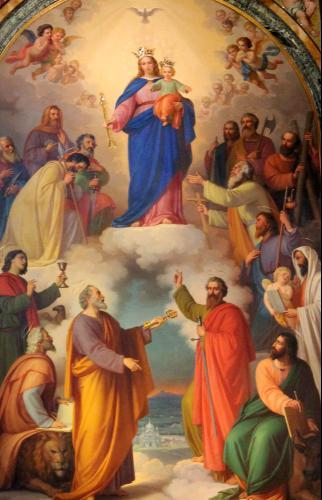
Mary Help of Christians (Latin: Sancta Maria Auxilium Christianorum; Spanish: Nuestra Señora María Auxiliadora; Filipino: Maria, Mapag-ampon sa mga Kristiyano), is a Roman Catholic Marian devotion with a feast day celebrated on May 24. Saint John Chrysostom was the first person to use this Marian title in year 345 as a devotion to the Virgin Mary.
The Church has traditionally focused on two aspects of Our Lady’s help on this feast day. Firstly, the Church focuses in this feast upon the role of Our Lady’s intercession in the fight against sin in the life of a believer. Secondly, the Church has focused upon Our Lady as one who assists Christians as a community, through her intercession, in fighting against anti-Christian forces.
The Church teaches us that it is divided into the Church Triumphant (which includes the members of the Church in heaven), the Church Suffering (this includes the members of the Church in purgatory), and the Church Militant (this refers to those members of the Church who are alive in this world). Because we are part of the Church Militant, we are in a spiritual warfare and this spiritual warfare requires that we recognize, as Saint Paul teaches us “For our wrestling is not against flesh and blood; but against principalities and powers, against the rulers of the world of this darkness, against the spirits of wickedness in the high places.” (Ephesians 6:12). We should always bear in mind the reality of our state as members of the Church living in this world. Despite St. Paul’s teaching, many Catholics do not take seriously their obligation to wage war against the demonic forces. It is for this reason the Association of the Auxilium Christianorum was founded.
In the Paschal Season, the first reading is from the 12th chapter of the Apocalypse; the rest of the year it is from the 3rd chapter of Genesis. Both texts prophesy the victory of “the Woman” over the Serpent or the Dragon. One occurs at the beginning of the Bible, the other at the end. This Woman, whose offspring or son is the instrument of victory, is understood to be the image of the New Sion, the Church, the holy people of messianic times. Yet at the same time she can be considered the image of Mary, daughter of Sion, type of the Church and mother of the redeemed people. In these readings, Mary is the New Eve; she is the Mother of the Living. In both cases she faces conflict and this conflict continues for “the rest of her children” who are also menaced. However, the Woman is always there to assist them.
The assistance of the Woman is especially helpful to those engaged in “new wars” and who keep the commandments of God.” Yet, Mary help of all Christians is not only helpful to those engaged in new wars, as the Gospel shows quite clearly. She is the bearer of joy, readying all Christians of good will to receive God’s grace and the many gifts of life. Yes, ultimately, it is the caring woman of Cana who makes victory over dragon and serpent possible — in letting Christ act on his own terms and at his own hour.
Saint Pius V gave Mary the title: “Help of Christians,” after the victory of the Christian fleet over the Turks at Lepanto on October 7, 1571, and he added this invocation to her litany. (Follow LITANY OF LORETTO).
The feast of Our Lady, Help of Christians, was instituted by Pius VII. By order of Napoleon, Pius VII was arrested, 5 July, 1808, and detained a prisoner for three years at Savona, and then at Fontainebleau. In January, 1814, after the battle of Leipzig, he was brought back to Savona and set free, 17 March, on the eve of the feast of Our Lady of Mercy, the Patroness of Savona. The journey to Rome was a veritable triumphal march. The pontiff, attributing the victory of the Church after so much agony and distress to the Blessed Virgin, visited many of her sanctuaries on the way and crowned her images (e.g. the “Madonna del Monte” at Cesena, “della Misericordia” at Treja, “della Colonne” and “della Tempestà” at Tolentino). The people crowded the streets to catch a glimpse of the venerable pontiff who had so bravely withstood the threats of Napoleon. When Pius VII returned to Rome on May 24, 1814, after spending five years of exile and captivity, he established the Feast of Our Lady, Helper of the Papal States. (McCaffrey, “History of the Catholic Church in the Nineteenth Cent.”, 1909, I, 52).
Sub Tuum Praesidium
The invocation of Mary as Help of Christians is part of the oldest prayer addressed directly to Mary, the “Sub tuum praesidium”, which was found on a papyrus dating, at the latest, from the end of the third century. This prayer was composed at a time of great danger for Christians and for the Church. “Praesidium” is translated as “an assistance given in time of war by fresh troops in a strong manner.” This prayer is used in Litanies to the Blessed Mother and as a concluding prayer to Compline. A partial indulgence is granted to the faithful who recite this prayer:
| SUB tuum praesidium confugimus, Sancta Dei Genetrix. Nostras deprecationes ne despicias in necessitatibus, sed a periculis cunctis libera nos semper, Virgo gloriosa et benedicta. Amen. | WE fly to thy patronage, O holy Mother of God; despise not our petitions in our necessities, but deliver us always from all dangers, O glorious and blessed Virgin. Amen. |
“Seek her patronage and ask for her intercession before you start out on this way. She has been given the charisma of drawing down the Holy Spirit on the Church, as she did at the Annunciation and at Pentecost, when she prayed with the Apostles. If you get her to pray with you and for you, you will be very fortunate indeed.” ~ Fr. Tony de Mello.
This, then, is Mary, the help of all Christians and as such, she is the star that prepares the coming of the rising sun, Christ.
References:
Association of the Auxilium Christianorum
McCaffrey, “History of the Catholic Church in the Nineteenth Cent.”, 1909, I, 52
NEW ADVENT, newadvent.org
Fr. Tony de Mello

-
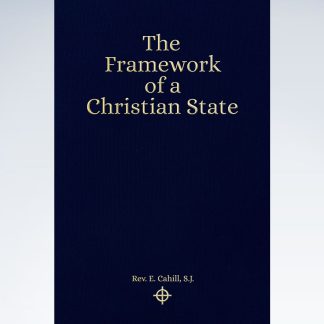 The Framework of a Christian State: An Introduction to Social ScienceUS$ 54.00
The Framework of a Christian State: An Introduction to Social ScienceUS$ 54.00 -
 Mary Help of Christians – 100% Pure Beeswax Votive CandlesUS$ 33.00 – US$ 59.00
Mary Help of Christians – 100% Pure Beeswax Votive CandlesUS$ 33.00 – US$ 59.00 -
 Mary in Her Scapular PromiseUS$ 27.00
Mary in Her Scapular PromiseUS$ 27.00 -
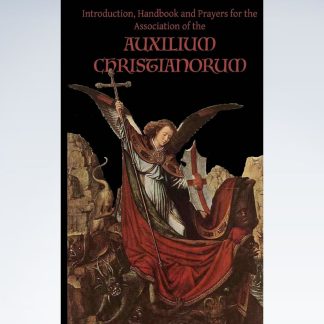 Prayers of the Auxilium Christianorum in Latin and EnglishUS$ 7.50
Prayers of the Auxilium Christianorum in Latin and EnglishUS$ 7.50 -
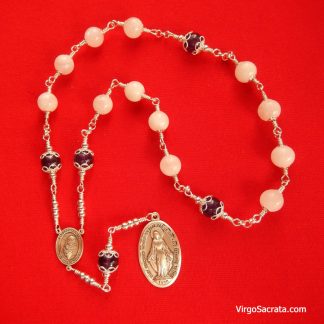 Chaplet of the Twelve Stars of the Blessed VirginUS$ 275.00
Chaplet of the Twelve Stars of the Blessed VirginUS$ 275.00 -
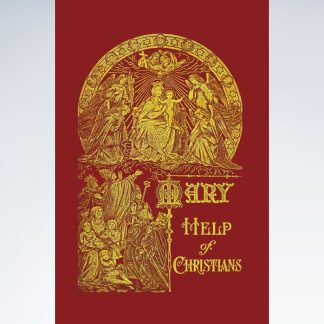 Mary Help of Christians – and the Fourteen Saints Invoked as Holy HelpersUS$ 29.00
Mary Help of Christians – and the Fourteen Saints Invoked as Holy HelpersUS$ 29.00
VIRGÓ SACRÁTA is a Christian mission-driven online resource and shop inspired from the beauty of Catholic faith, tradition, and arts. Our mission is to “Restore All Things to Christ!”, in continuing the legacy of Pope St. Pius X under the patronage of the Blessed Virgin Mary. “Who is she that cometh forth as the morning rising, fair as the moon, bright as the sun, terrible as an army set in battle array?” O Mary, conceived without sin, pray for us who have recourse to Thee.


